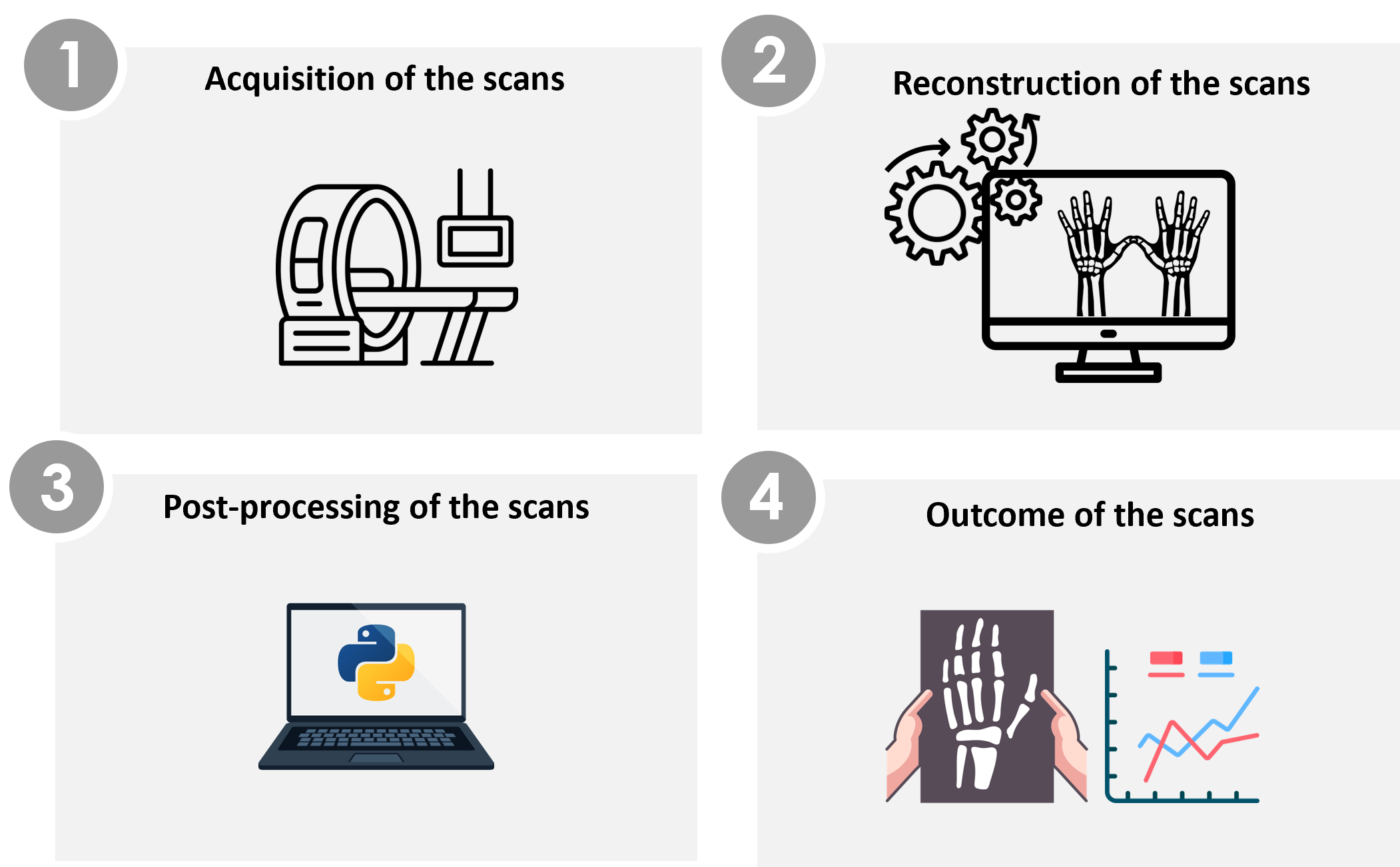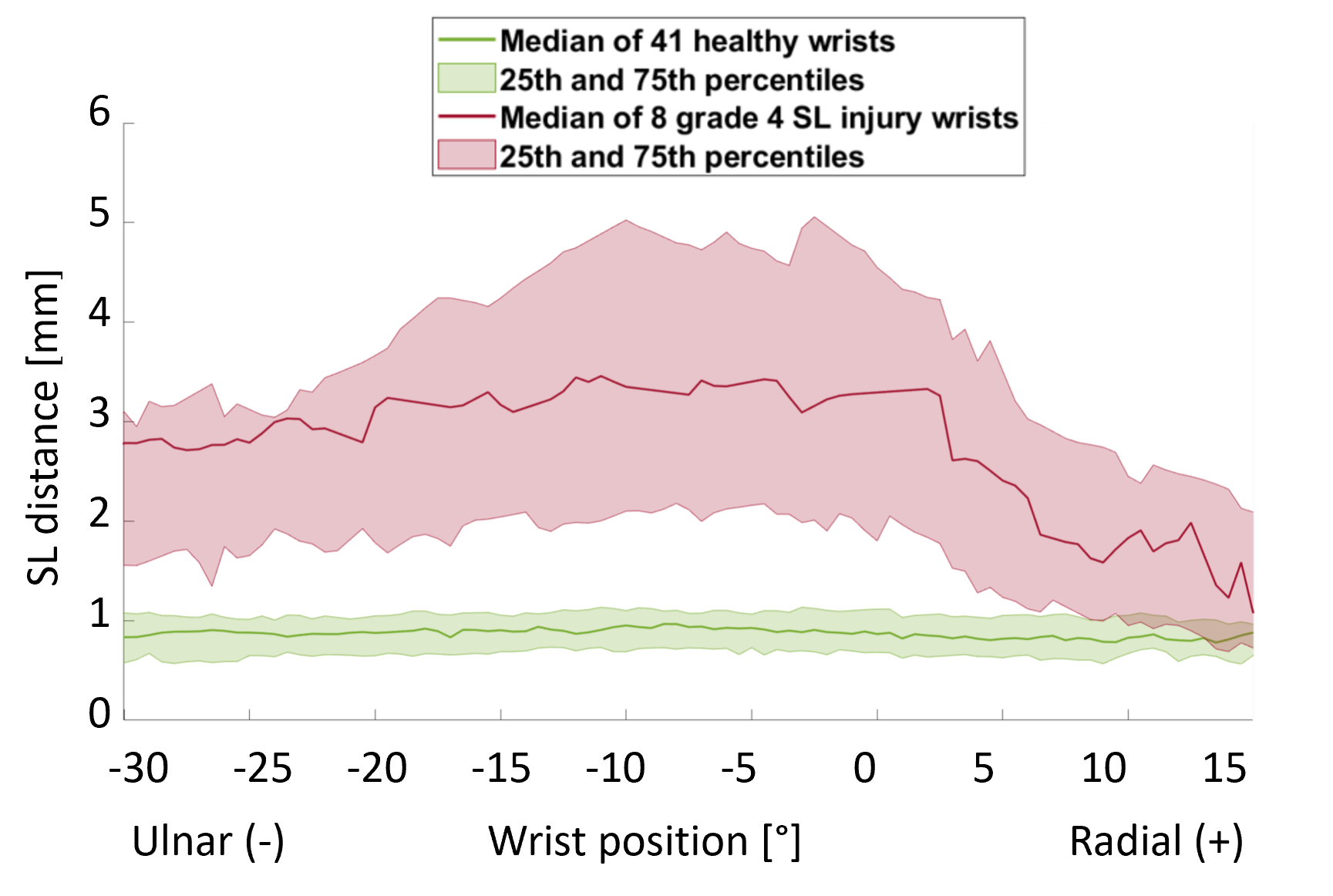Research
4D Wrist CT
Wrist injuries might cause abnormal kinematics of the wrist joint (carpal instability), which progress to osteoarthritis if left untreated. Dynamic CT imaging makes it possible to evaluate this carpal instability non-invasively. During the scan acquisition, a sequence of 3D CT scans is obtained whilst the wrist is in motion. One 4DCT scan consists of somewhere between 100 and 200 3D CT scans. Due to the large amount of data, manual assessment of these scans is not feasible in clinical practice. Therefore, our team focuses on automatically extracting a motion analysis of the wrist from these 4DCT scans. This motion analysis of the wrist can aid the diagnostic workflow of many wrist injuries and can also be used to assess the effect of (surgical) treatments. Or in general, to gain better insight into the complex kinematics of the wrist.
Under the name of DYNAMIC (Dynamic Non-invasive Analysis of Motion to Improve Carpus diagnostics and treatment), this project was initially initiated by the Plastic and reconstructive surgery department of the Radboudumc. It roughly consists of four parts, as shown in Figure 1. We can already extract a motion analysis of the wrist from these 4DCT scans, but all steps need to be optimized.

Figure 1: From scan acquisition to the clinic. The four steps that need to be optimised.
Currently, there are two main research lines within this project. The first focuses on the scapholunate ligament (SL). This SL ligament is located between two carpal bones, the scaphoid and lunate, and is one of the primary stabilizers of the wrist. Initial results already show that it is possible to distinguish a wrist with a total SL injury from a healthy wrist. An example is shown in Figure 2, where the distance between the scaphoid and the radius was automatically measured throughout the entire wrist movement.

Figure 2: Graph showing the results of the SL distance during wrist radial-ulnar deviation
The second research line focuses on the clinical value of 4DCT for diagnosing acute scaphoid fracture and assessing wrist kinematics in pre-operative planning, and outcome measurement of mal-united scaphoid, distal radius, and forearm fractures.
Researchers: